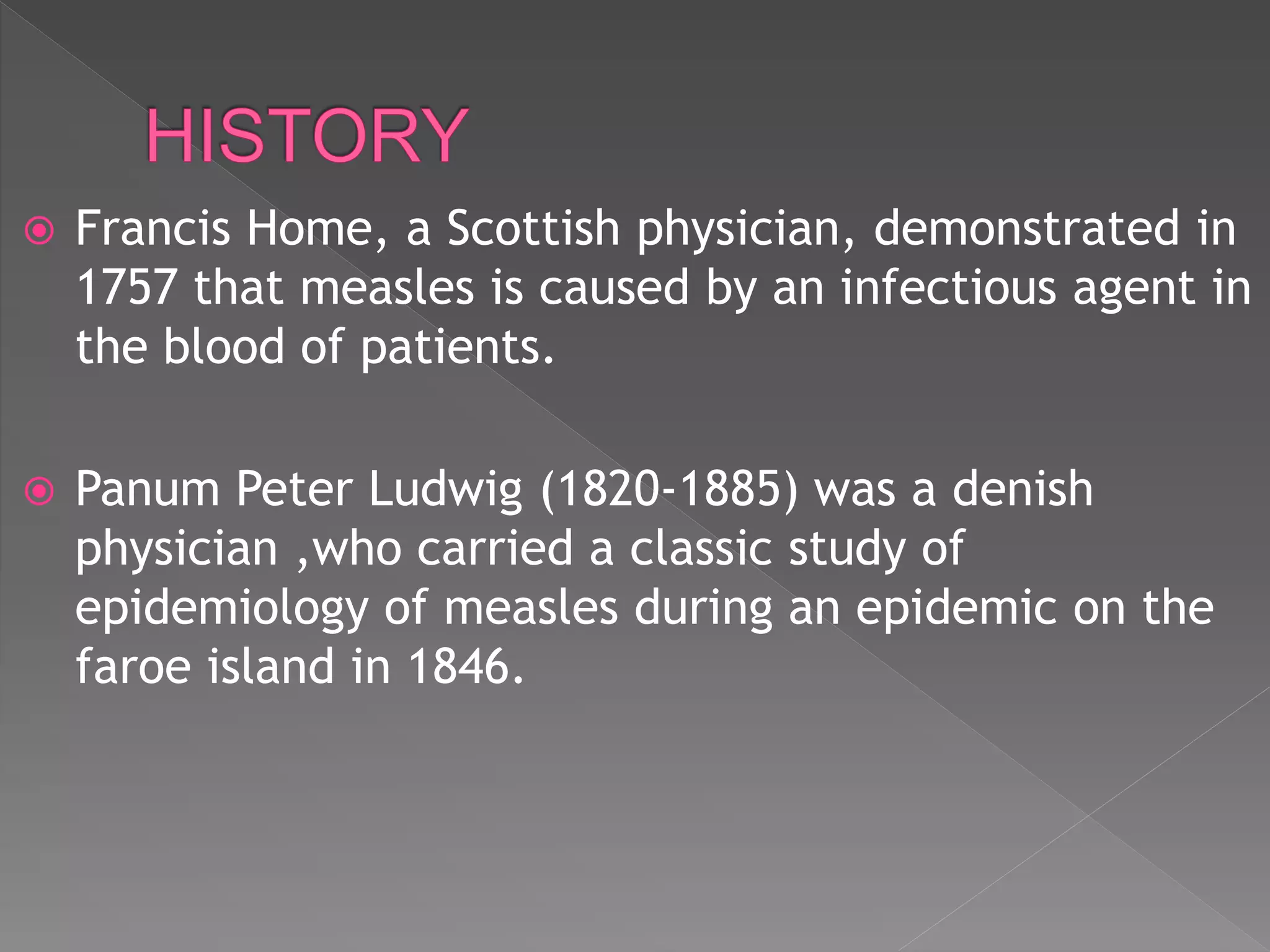Measles is a highly contagious viral infection that is transmitted through respiratory droplets. It causes a rash and fever and can lead to severe complications or death, especially in malnourished children. Before the widespread use of the measles vaccine in the 1960s, nearly all children contracted measles by age 10. Through vaccination campaigns and increased immunization rates, global measles deaths have declined significantly. However, ongoing efforts are still needed to achieve regional elimination goals and protect susceptible populations.





































